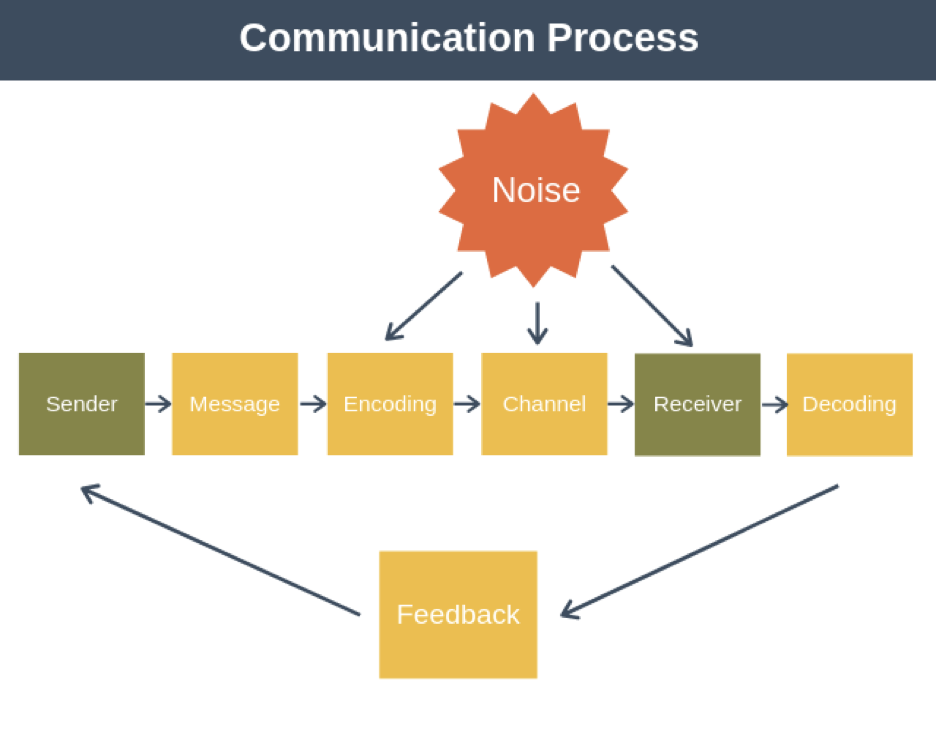What comes to mind when you hear the words ‘communication’ or ‘communicating’? Typically, I think of passing along information, instructions, directions, evaluations, etc. Based on this idea of what communication is, it appears that the process is a one-way street – me giving something to someone. However, effective communication is actually a two-way street – both sending and receiving. Both aspects of communication are important, and both have the potential for pitfalls that lead to ineffective communication. Ultimately, the goal of communication is for the sender to pass along a message in a way that can be fully understood and comprehended by the receiver, and for this process to create a continuous feedback loop where both parties understand each other. Effective communication leads to more successful team interactions.
How do we communicate?

Image Source: Expert Program Management
Take a look at the graphic above. The communication process starts with the sender, who has a message to convey. That message is encoded when the sender speaks it, shows it, or writes it out, and is sent to the receiver through a channel, like an email, a phone call, or a face-to-face conversation. Seems easy enough, right? Now comes the complicated part – noise! Noise is anything that might prevent the message from being conveyed successfully. Things like actual noise (a loud job site), personal bias/assumptions, using language that is not familiar to the receiver, or using a channel of communication that is not suited to the message all decrease the likelihood that the receiver is going to understand the message. It is the sender’s job to make sure that noise is limited – for example, not sharing important instructions on a loud job site or, more commonly, not assuming our receiver has all of the same background knowledge or access to information that we do.
When the person on the receiving end gets the message, they will “decode” it, or attempt to understand the message. By limiting noise, we can help the receiver to understand our message more easily. Some level of noise is unavoidable, so the receiver will provide feedback by asking clarifying questions, adding to the message or providing comments about the message, or repeating their understanding of the message back to the sender. As senders, we must encourage receivers to provide feedback and take care to be open and free of judgment when analyzing and responding to feedback.
How do we determine success?
Success depends on how well we can communicate with our clients, supervisors, and co-workers. As the sender of a message, it is our responsibility to make sure that we are limiting noise, including enough detail, sending our message through an appropriate channel, and being open to feedback. As the receiver, we have an equal duty to be open to new information, seek to understand, and ask questions when we don’t. Without effective communication, we can’t manage expectations, work processes, acceptable behaviors, and/or other crucial items. In my career, I have found that there is usually a reason for any expectation, action, or behavior. To support or modify that expectation, action, or behavior, I have to understand the reason behind it. Receiving information from an individual or group helps me (and can help you) to be able to communicate with an understanding of their perspective and allows the senders and receivers to function as a team with everyone’s success in mind.
Teams communicate with one another freely and effectively. They understand that each person has a job to do and as a team, they can accomplish more than as individuals. We can all be cheerleaders and advocates for our team by being effective communicators. GO TEAM.

